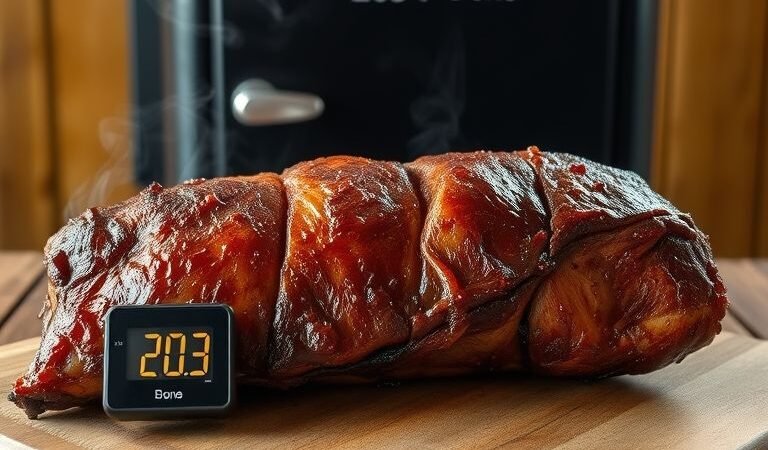If you’re diving into the world of low‑and‑slow BBQ, you’ve probably hit the infamous pork butt stall—that frustrating plateau where your smoker’s internal readout halts around 150–170 °F and doesn’t budge for what feels like hours. Far from a mistake, it’s a vitally normal phase of smoking that even seasoned pitmasters must manage to achieve the juiciest, most flavorful pulled pork.
In this guide, we’ll explore exactly what the bump in the road means, why it happens, and give you smart, step‑by‑step ways to embrace the stall and finish your pork butt like a pro.
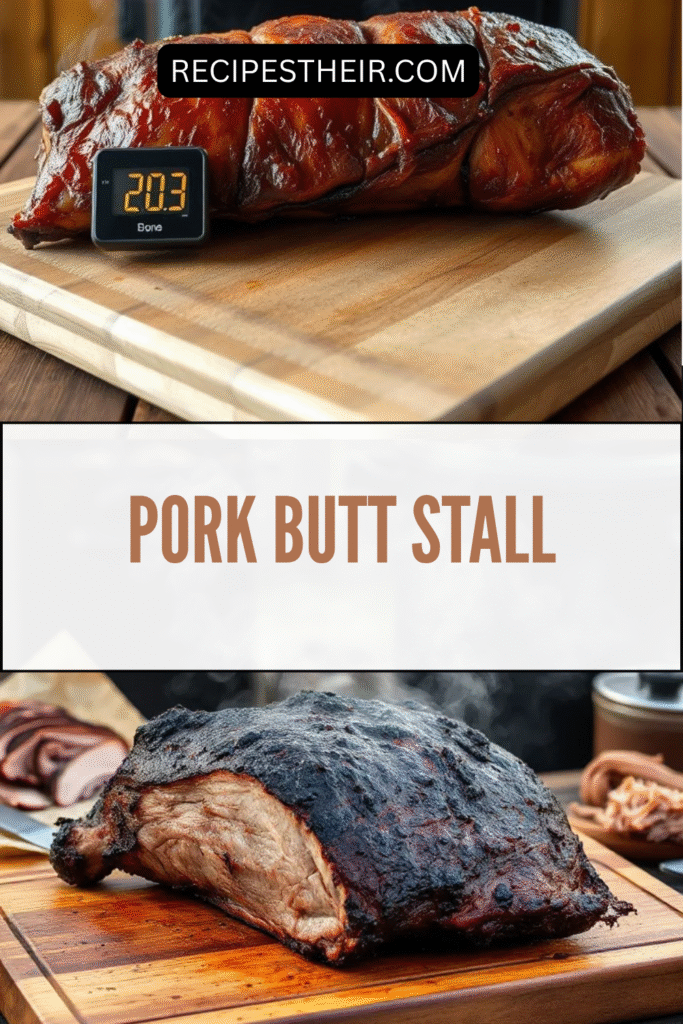
What Is the Pork Butt Stall and Why It Happens 🍖
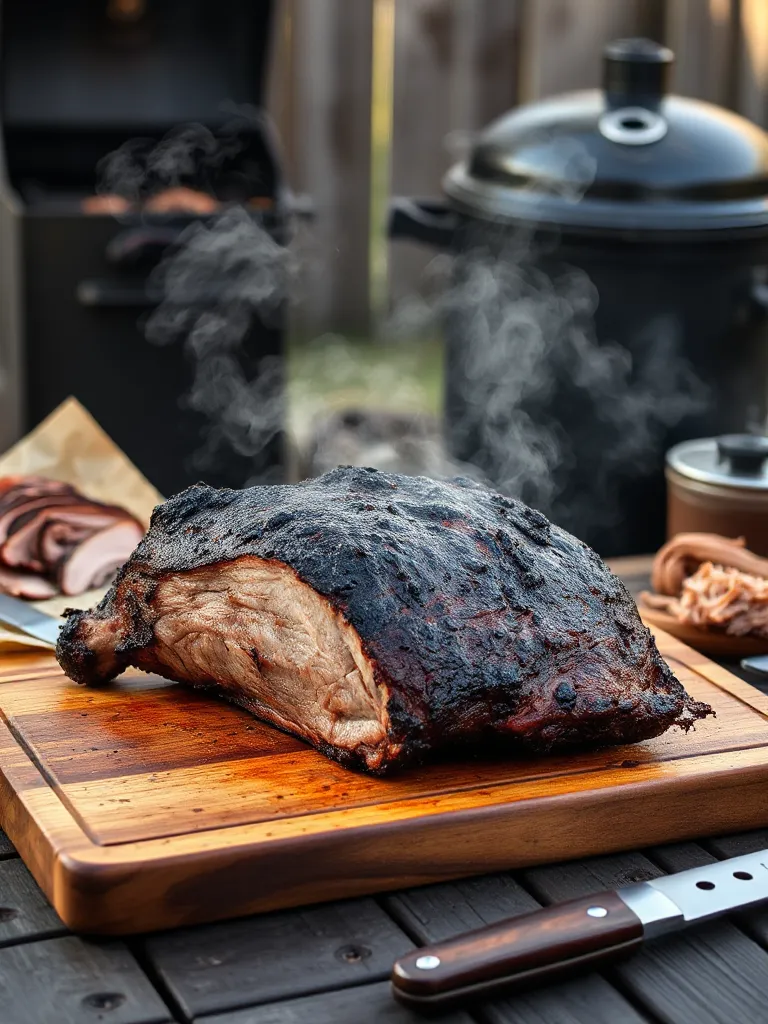
When smoking a pork butt (also known as Boston butt or pork shoulder), many pitmasters run into a frustrating plateau in internal temperature around 150–165 °F. This phenomenon is known in BBQ parlance as the “pork butt stall.” No matter how long you leave it on the smoker, the meat barely budges from this range. What’s going on?
- Moisture evaporation (evaporative cooling): As the pork butt smokes, its surface releases moisture. This evaporation absorbs heat and effectively keeps the internal temperature from rising—much like sweating cools your skin.
- Render and gelatinization: Collagen within the meat begins converting to gelatin, a process that demands energy and heat. During this transformation, the meat “pauses” in temperature rise.
- The bark forming: A crust called “bark” forms when sugar, fat, and proteins on the meat surface caramelize and polymerize. This outer layer insulates the meat and slows heat transfer.
Key Tips to Tackle the Stall (or Enjoy It)
1. Be Patient and Respect the Stall
- Realize it’s natural and a sign the pork is absorbing smoke and converting fat.
- Avoid taking the meat off prematurely—temperature stagnation is part of the journey to tender, juicy pork.
2. Wrap (“Texas Crutch”) to Push Through
- Use aluminum foil or butcher paper, tightly wrap the pork butt around 150–165 °F.
- Wrapping helps retain moisture and accelerates the cooking process, often eliminating the stall in 30–60 minutes.
- Be aware: this method softens the bark slightly, but it still remains flavorful.
3. Raise the Pit Temperature
- Increase smoker temp to 275–300 °F during the stall.
- This ups your heat input and helps overcome evaporative cooling—but balance carefully to avoid over-smoking or drying the meat.
4. Spritz or Mop With Caution
- Lightly spritzing with apple juice or cider vinegar may add flavor and moisture.
- Overdoing it, however, risks extending the stall via additional evaporative cooling.
Ideal Times & Temperatures for Pork Butt
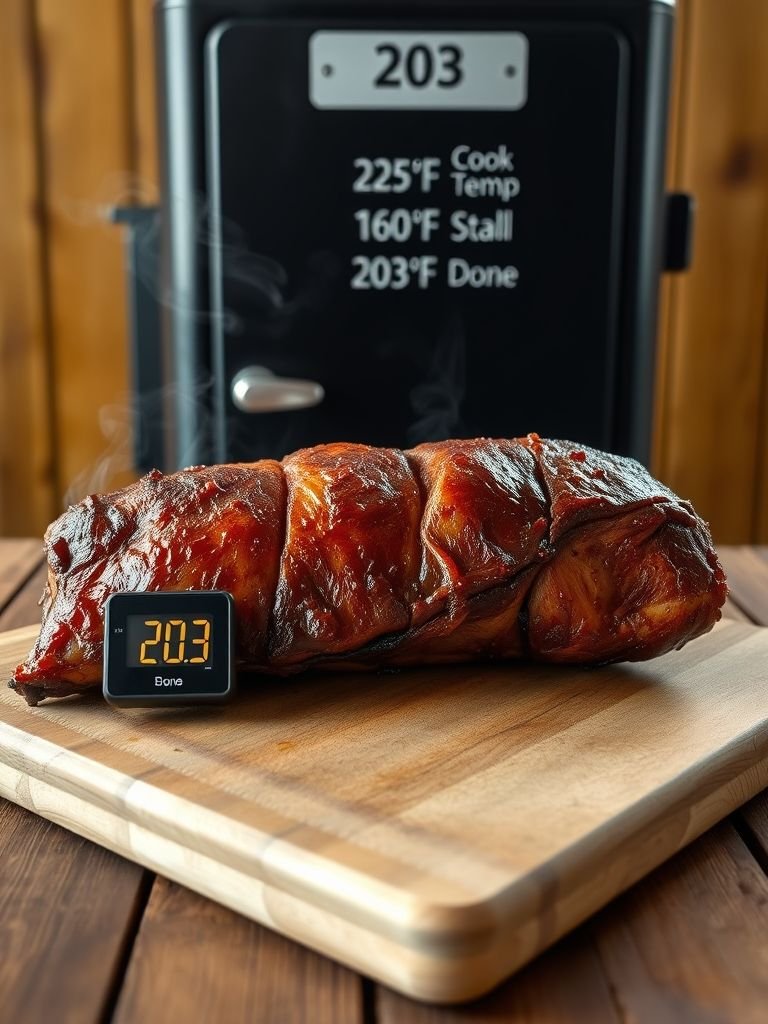
| Stage | Temp (internal) | Smoker Temp | Approx. Time |
|---|---|---|---|
| Start | ~40°F (fridge) | 225–250 °F | N/A |
| Stall | 150–165 °F | 225–250 °F | 4–7 hrs in 10–16-hr cook |
| Finish | 195–205 °F | 225–250 °F | Until probe slides in easy |
- Stall often begins around 150 °F and ends anywhere up to 165 °F.
- The finish temperature for tender, pullable pork is 195–205 °F, depending on fat content and size.
Step-by-Step Recipe: Mastering the Pork Butt Stall
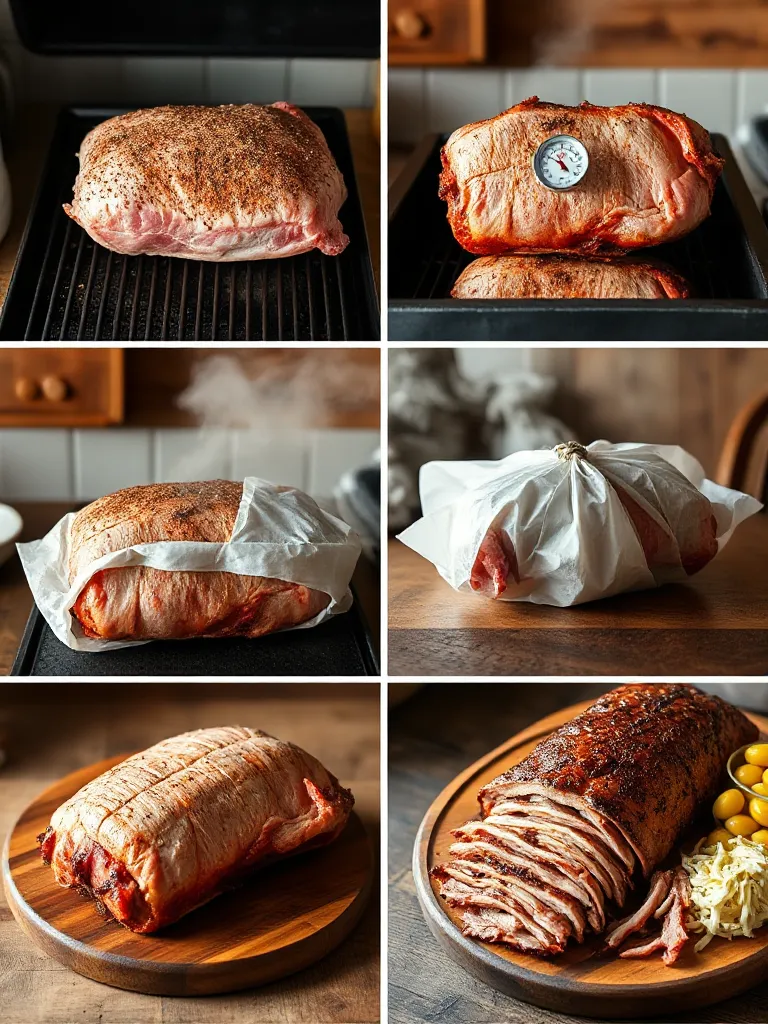
Ingredients
- 8–10 lb bone-in pork butt (Boston butt)
- Yellow mustard (acts as a binder)
- Rub (mix):
- ⅓ cup brown sugar
- 2 Tbsp kosher salt
- 2 Tbsp coarse black pepper
- 1 Tbsp paprika (sweet or smoked)
- 1 tsp garlic powder
- 1 tsp onion powder
- ½ tsp cayenne (optional, for heat)
Equipment
- Smoker or grill (fueled by wood, charcoal, or pellet)
- Meat thermometer (instant-read probe, wireless preferred)
- Butcher paper or heavy-duty aluminum foil
- Spritz bottle (for moisture, optional)
Instructions
1. Prep the Pork Butt (Night Before or Morning Of)
- Pat dry with paper towels.
- Rub a thin layer of yellow mustard over all surfaces.
- Apply rub generously, coating the entire butt.
- Wrap in plastic wrap or place in a covered pan and refrigerate for 4–24 hours for maximum flavor absorption (optional, but highly recommended).
2. Preheat the Smoker
- Set smoker to 225–250 °F.
- Choose wood—hickory, oak, or apple wood pair especially well with pork.
- Aim for 10–15% humidity in the smoke chamber. Use a water pan if dry.
3. Smoke Until Stall Sets In
- Insert meat probe into the thickest part, near the bone.
- Place pork on the smoker fat-side-up (heat from below).
- Smoke without disturbance until it reaches around 150 °F—expect 4–6 hours depending on size and temperature.
- Store-pick frequent barbecue spritzing heats: not recommended.
4. Confront the Stall
- At 150–155 °F, decide: wrap or wait?
- Unwrapped: Will stall out, but bark becomes very crisp. Expect stall for 1–3 hours.
- Wrapped: Use butcher paper for a slight bark or foil for a softer bark, to push through the stall in 30–60 minutes.
- Return to smoker until internal temp climbs again toward 195–205 °F.
5. Finish & Rest
- Once probe slides easily with little resistance at 195–205 °F, remove pork.
- Wrap in foil, and let rest in a cooler or insulated container for 1 hour—this lets juices redistribute and tenderness peak.
6. Pull and Serve
- Unwrap and shred using forks, bear claws, or gloved hands.
- Mix bark and juicy bits together for flavor-packed pulled pork.
- Serve on buns, with BBQ sauce on the side. Also great in tacos, nachos, stuffed baked potatoes, or with coleslaw.
Common Questions About the Pork Butt Stall
❓ How long will the stall last?
- Typical stall time is 1–3 hours at 225–250 °F for a butt weighing ~8–10 lb.
❓ Can I simply increase smoker temperature to avoid stall?
- Yes—but raising the smoker to 275–300 °F can speed through the stall without wrapping. Be cautious, as the meat cooks faster and smoke absorption is reduced.
❓ Why wrap with butcher paper vs. foil?
- Butcher paper offers more breathability, giving you a firmer bark and retaining crust flavor.
- Aluminum foil locks in moisture more tightly, softening the bark but speeding up cooking.
❓ My pork is stuck at 158 °F—should I wrap?
- Yes. At this point, wrapping is the easiest way to break free of the stall.
Pro Tips to Master the Stall and Flavor
- Pre‑soak wood chips? Unnecessary—pitch dry wood for intense smoke flavor.
- Use a water pan: Helps maintain humidity, keep edges from drying and reduce stall friction.
- Start heavy: The thicker your rub, the better the bark forms.
- Flip occasionally: Even heat access will aid in consistent stall behavior.
- Check the texture: At 200 °F plus a rest, the meat should separate easily—temperature isn’t everything.
- Jiggle test: If it “jiggles” like jelly, it’s likely beyond stall and nearing done.
Why the Stall is Your Friend
Understanding the pork butt stall transforms it from a frustrating interruption into a celebrated part of low-and-slow BBQ:
- It signals moisture retention, which results in juicier meat.
- Indicates the bark development phase—essential for texture and flavor.
- Gives time to absorb smoke, increasing depth of taste.
Recipe Recap: Pork Butt Stall Edition
Timeline (for ~8 lb pork)
- Prep & Rub: Overnight or 1–2 hrs before
- Smoke: To 150 °F – ~4–6 hrs at 225–250 °F
- Stall: ~150–165 °F – 1–3 hrs (or wrap early)
- Finish: To 195–205 °F – ~2–4 hrs
- Rest: 1 hr before pulling
- Total Time: 10–16 hrs
Serving Ideas Beyond the Buns
- Tacos: Warm tortillas, diced onions, cilantro, salsa verde
- Loaded Nachos: Pork, cheese, jalapeños, pico de gallo, sour cream
- VOODOO Baked Potato: Shredded pork atop a baked potato with cheese & chives
- BBQ Pizza: Flatbread, barbecue sauce, pork, red onion, mozzarella
- Salad Topper: Mixed greens, cherry tomatoes, avocado, with pulled pork & vinaigrette
Final Thoughts: Embracing the Stall
From rookie barbecue enthusiasts to seasoned grillmasters, every pitmaster knows the stall is a pivotal moment. It’s a culinary rite-of-passage that separates average cooks from great ones. Embracing and managing the pork butt stall with smart techniques like wrapping, temperature adjustment, and proper resting will reward you with the ultimate reward: moist, tender, flavor-saturated pulled pork.
Quick Tips & Tricks (Bullet Recap)
- Stall temp: ~150–165 °F
- Wrap early to shorten the stall or wait for crisp bark
- Keep smoker at 225–250 °F, or bump to 275–300 °F post-stall
- Rest after cook for ~1 hr—vital for juicy shredding
- Use texture tests (“probe glide,” jiggle) over strict temp
- Serve creatively: buns, tacos, potatoes, pizzas, salads
